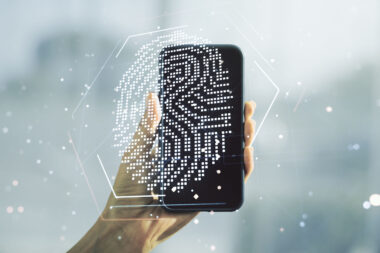Back in 1996, Tom Cruise’s use of fingerprinting and facial recognition in the first “Mission: Impossible” was the hottest new technology in Hollywood. But twenty years – and four new MI movies – later, biometrics are much more commonplace. You can use your fingerprint to unlock your phone and use voice recognition to dictate notes and emails.
Follow the traveler’s new biometric journey through the airport in our infographic
But while biometrics are widely accepted in the commercial world, something about the government using this type of technology makes people nervous. We’re here to explain why it shouldn’t and why the incorporation of biometric authentication and identification is going to lead to a more convenient, secure future.
Defining Biometrics
According to Merriam Webster, biometrics are any “measurement of the human body.” That may be the simplest definition, but biometrics also carry the connotation of being inextricably linked to identity.
Biometrics includes physiological measurements like fingerprints, iris analysis, and the shape of your hand, but they can also evaluate behavioral measurements such as voice recognition and handwriting tests.
Whatever the method, all these biometric techniques have in common is that they all collect characteristics which are:
- universal, as they can be found in all individuals
- unique, as they make it possible to differentiate one individual from another
- permanent, allowing for change over time
- recordable, as the characteristics of an individual cannot be collected without their consent
- measurable, allowing for future comparison
- and forgery-proof.
That being said, biometrics allow a person to be identified and authenticated based on a set of recognizable and verifiable data, which are unique and specific to them.
Identification vs. Authentication
This unique data can be used one of two ways.
You know the facial recognition database you see in movies being used by the CIA and Interpol? That’s biometric identification. Starting with a picture of one person, they can run a comparison of biometric data against others to determine his or her identity.
In contrast, biometric authentication answers the “Are you really who you say you are?” This is most beneficial in the situation of stolen identity. A current collection of data – whether it be a picture of your face or a scan of your fingerprint – is processed against your biometric profile in order to ensure your identity.
Methods of Authentication in Border Management
Now so far, I’ve mentioned a few examples of biometrics in movies. But how can this technology be used in real life?
Let’s take the example of travel. Say you are traveling abroad for vacation. Along the way, you will have to consistently prove your identity one of three ways:
- By means of a possession such as your passport or driver’s license.
- By means of knowledge like your social security number or address.
- By means of who/what you are (using your fingerprint, eyeball or even your voice).
Yes, that last one is the only method that utilizes biometrics.
Did you know the probability of finding two similar fingerprints is one in 64 billion? That being said, biometrics are a lot more reliable than identifying someone by a driver’s license that could be forged or stolen or a password which could be easily discovered.
So you see, biometrics are the best technology out there to keep your identity safe and your travel experience smooth.
Visit our website or download our Coesys Border Management brochure for more information on how airports across the globe can employ biometric technology to secure the traveler’s identity and simplify the process.


